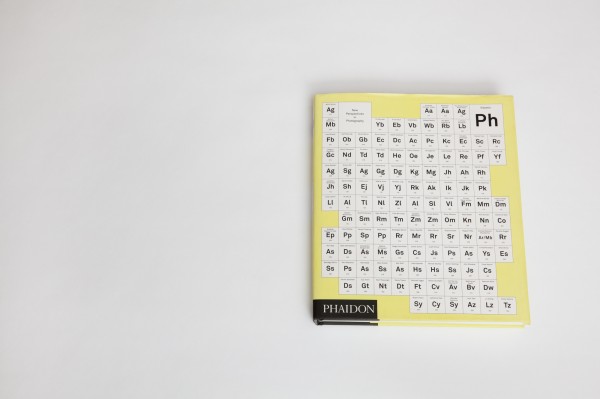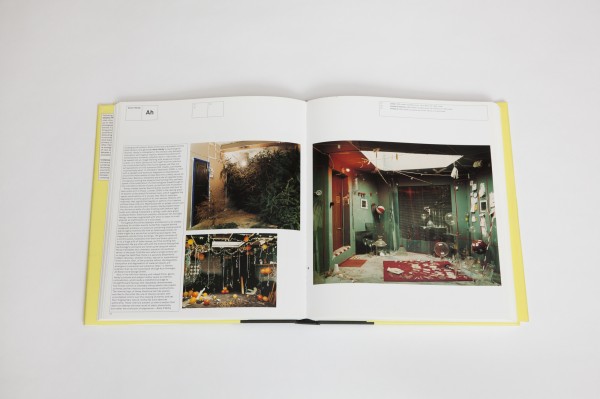| Phaidon —Vitamin Ph, Sally O’Reilly — 2006 | |||
| Underground bunkers, back rooms and overlooked corners both harbour and generate Anne Hardy’s psychological dramas. Hardy is interested in the literary cusp between naturalism and magical realism, where the potential of contemporary humanity, whether dark or ridiculous, can be teased into an image teeming with evidence of past events. it is fairly obvious at first sight that her interiors are constructed rather than found spaces, yet they are extrapolations of vivid scenarios that maybe, just maybe, could actually exist. In Untitled IV (balloons)(2005), a room with a skylight and technical diagrams on blackboards around the walls seems to have been the unlikely venue for festivities. Balloons, streamers and a pile of cigarette butts, incongruous among the sloppily fixed ceiling tiles, perhaps speak of the celebration of a technological breakthrough or the unbridled outburst of pent-up technocrats’ frustration.
Hardy creates spaces beyond public access that tend to dam some sort of chaos. Lumber(2003) is the resting place of dozens of discarded Christmas trees, which suggests the seedy machinations of a society that likes to suppress degradation and the spoils of its own excess. |
Objects and materials that signify the fragility or pathos of our desires suffuse these interiors. Mattresses left on street corners are literally dirty laundry aired in public; Hardy presses them into service as walls of a den bristling with defunct light bulbs and cabling. Elsewhere a ceiling— with dark-green scalloped Artex, electrical conduits, utilitarian fan and light fitting— has been augmented with stick-on stars in a vain attempt at prettification of a lost cause. Throughout this series dystopic architecture is an uneasy backdrop for sinister events: butterflies trapped behind modernist windows or a solarium containing tropical plants but no signs of animal life hint at failed experiments. Or there might be a sense that something apocalyptic has happened outside these buildings. the glass windows of a control panel, bedecked with dials and levers, give out on to a huge drift of fallen leaves, as if the building has been buried.We are often left with the distinct feeling that technology’s command will never quite vanquish nature. Hardy translates this cinematic scenario into political terms: in the post-Cold War era when a single enemy can no longer be identified, |
there is a paranoia attached to hidden networks, whether human, natural or supernatural.These scenes, then, of the possible fallout, disintegration, dissipation and degradation of material objects are analogous to personal and collective fates— a literary tradition that can be traced back through Kurt Vonnegut, JG Ballard and George Orwell.
Also in line with this literary, and indeed filmic, genre, Hardy’s process and subject matter spark an internal contradiction, which lends a metafictional edge to straightforward fantasy. She repeatedly demonstrates how human control in inevitably relinquished to the chaotic universe, yet her interiors are themselves constructions. The internal logic of these theatrical set-like spaces ascribes to the artist the role of literary narrator with uncontested control over the relaying of events, and yet their fragmentary nature confounds such absolute authorship. These interiors present us with a realism that does not attempt the total recall of static phenomena, but rather the confusion of experience. |

|
